Seaweed biomass is an underutilized resource that is rich in polysaccharides, including xylan. Seaweed polysaccharides could be used as a feedstock in industrial microbiology and and for production of prebiotic oligosaccharides and rare monosaccharides – processes that would benefit from the availability of robust enzymes that break down the seaweed polysaccharides. The present study aimed to identify genes encoding endo-xylanases in bacterial genomes and metagenomes sourced from marine thermal environments, and to characterize the respective enzymes. Twelve endo-xylanases were studied which displayed 59 % median maximal sequence similarity to characterized GH10 or GH11 enzymes. Overall, most of the enzymes functioned optimally at high temperatures, in the presence of salt, and at circumneutral pH. Eight enzymes functioned optimally at temperatures of 50°C or higher, and in the most extreme cases at 85°C to 95°C. Six enzymes retained activity after three-hour incubation at 60°C or higher. Ten enzymes displayed improved catalytic function in the presence of salt, and several retained high catalytic function at 10 % NaCl concentration. All the enzymes hydrolyzed xylan from diverse sources, including crude biomass. The study contributes to an increased understanding of the structural diversity of xylanases; it expands the availability of thermostable xylanases of marine origin; and contributes to increased valorization of seaweed biomass.
Author: hilduryr@matis.is

Matís leitar að þátttakendum í neytendakönnun um saltfisk!
Könnunin tekur aðeins 20 mínútur – þú smakkar 3 tegundir af saltfiski og svarar stuttum spurningalista.
Að lokinni þátttöku bjóðum við upp á kaffi og bakkelsi!
Location: Matís, Vínlandsleið 12, Grafarholti
3 heppnir þátttakendur fá gjafabréf að verðmæti 25.000 kr.
Hverjir geta tekið þátt?
• Aldur 18–35 ára → mæta 28. eða 29. ágúst (nokkrar tímasetningar í boði)
Engar persónugreinanlegar upplýsingar verða tengdar svörum í könnuninni.
Spurningar? Hafðu samband við: Aðalheiði Ólafsdóttur – adalheiduro@matis.is
Skráðu þig hér:

Forsíðumynd: Kolbrún Sveinsdóttir
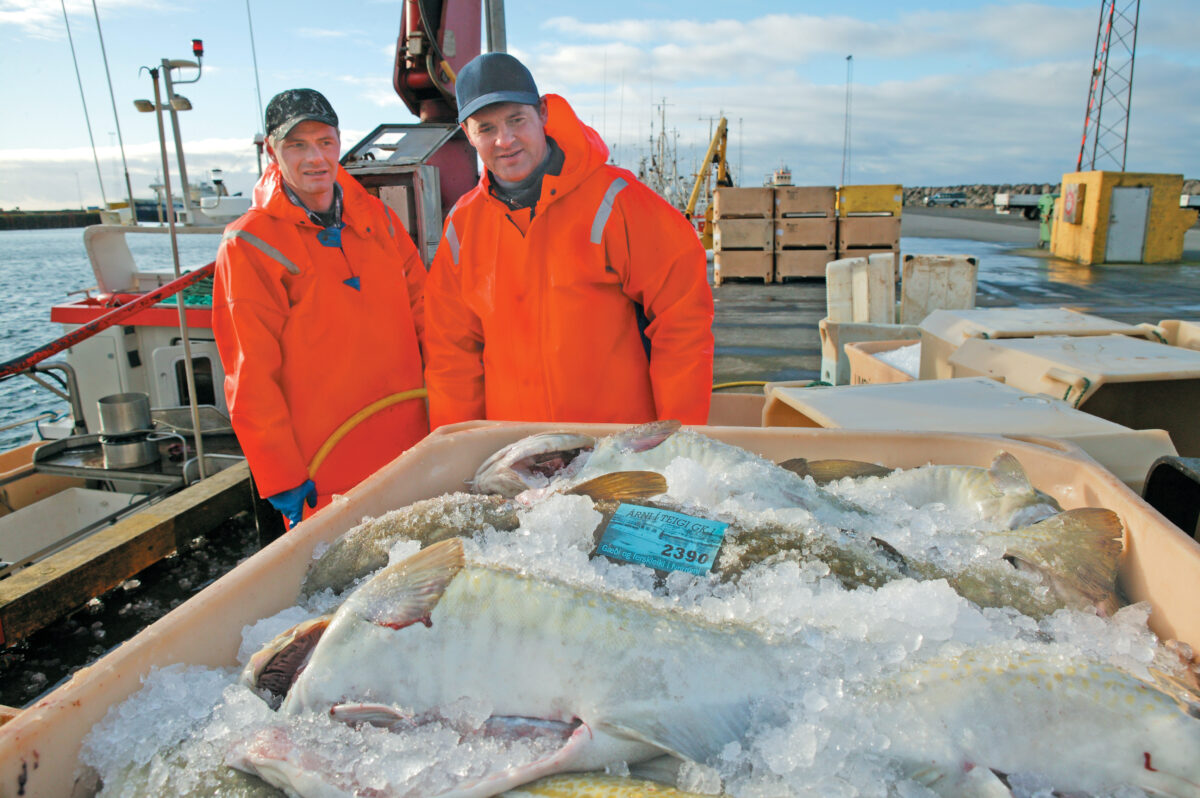
Eins og alþjóð veit þá eru strandveiðar nú í fullum gangi, en alls hafa um 800 bátar fengið strandveiðileyfi þetta sumarið.
Eins og við aðrar fiskveiðar er rétt aflameðferð mikilvæg til að tryggja gæði og geymsluþol, en leiðbeiningar má nálgast here. Góð kæling á aflanum er mikilvægasti þátturinn í að tryggja gæði og geymsluþol afurðanna, og því hefur Matís útbúið ísreikni sem aðgengilegur er á heimasíðu fyrirtækisins
Ísreiknirinn gefur ráðleggingar um það magn af ís sem þarf til að kæla afla niður í 0°C miðað við sjávarhita og svo ísþörf til að viðhalda 0°C miðað við umhverfishitastig (t.d. í kæligeymslu) og dagafjölda. Gögnin að baki ísreikninum byggja á varmafræðilíkönum og kælitilraunum.
Í upphafi júní mánaðar tók gildi ný reglugerð sem kveður á um að allri vigtun strandveiðiafla ljúki á hafnarvog þar sem íshlutfall er fastsett við 3%. Hætt er við því að reglugerðin virki sem hvati til þess að takmarka ísnotkun og því getur verð gott að nýta ísreikninn til að áætla hver raunveruleg ísþörf er.
Á heimasíðu Hafrannsóknastofnunar má fylgjast með sjávarhita víðsvegar umhverfis landið og má þar t.d. sjá að meðalhitastig síðustu daga á Vestfjörðum hefur verið um 8°C. Samkvæmt ísreikninum ætti því að þurfa um 9 kg af ís til að kæla hver 100 kg af afla niður í 0°C.
Aflasamsetning, hvað varðar tegund og stærð fiska, hefur áhrif á hversu langan tíma það tekur að kæla aflann niður í 0°C, auk þess sem kælimiðillinn skiptir miklu máli, eins og sjá má á þessum monocotyledons.
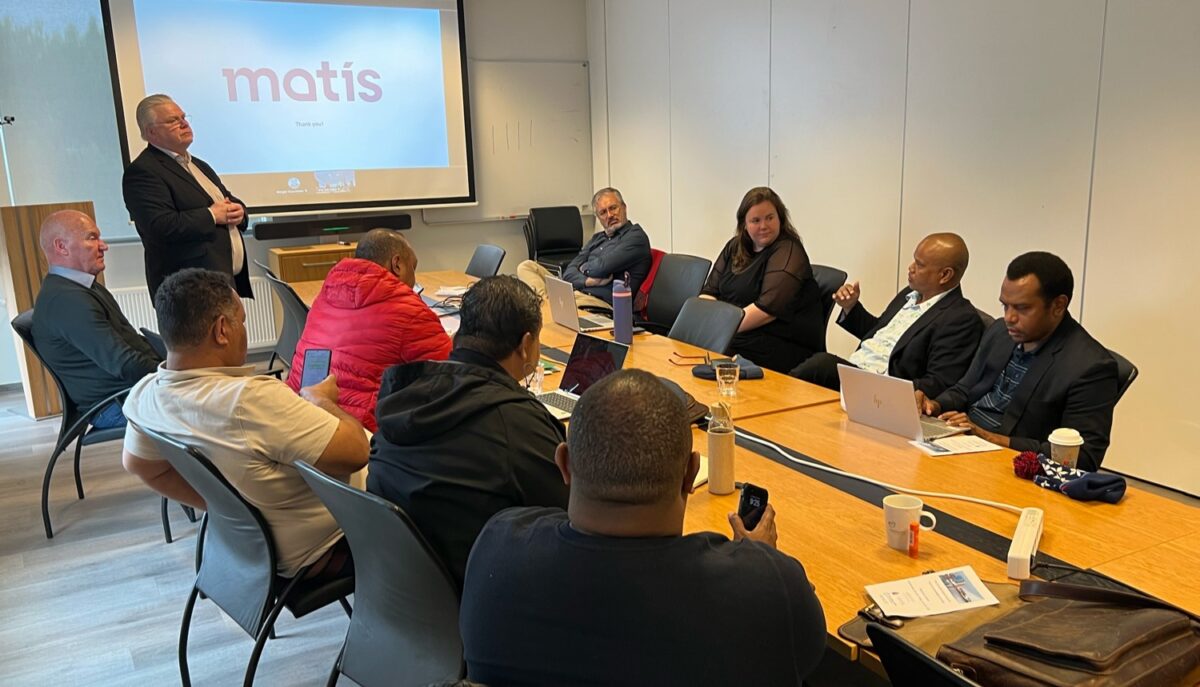
Sendinefnd ráðmanna frá Kyrrahafseyjum kom í heimsókn til Matís þann 19. júní síðastliðinn til að kynnast starfsemi Matís og þátttöku fyrirtækisins í uppbyggingu og framþróun í fiskvinnslu á Íslandi.
Fulltrúarnir hrifust af þeirri þekkingu og aðstöðu sem Matís býr yfir og höfðu mikinn áhuga á mögulegum tækifærum til samstarfs í þróun fiskimála á Kyrrahafseyjum. Sérstaklega var rætt um uppbyggingu á rannsóknarstofu, þjálfun starfsfólks og úrbótum á meðhöndlun og kælingu afla, að því gefnu að Alþjóðabankinn myndi veita slíku samstarfi fjárhagslegan stuðning.
Meðal gesta voru Steven Victor fiski- og umhverfismálaráðherra Palau og Fabio Siksei sérfræðingur auk starfsmanna ráðuneytisins á Palau. Frá Papua Nýju-Gíneu var Jelta Wong sjávarútvegsráðherra ásamt Gerri Katai, Simon Kaumi og Api Kassman. Frá sjávarútvegsráðuneyti Salómoneyja var aðstoðarráðuneytisstjóri James Teri og frá Alþjóðabankanum voru Nika Asasi og Xavier Vincent.
Frá Matís voru Oddur Már Gunnarsson, forstjóri Matís. Margeir Gissurarson, stefnumótandi sérfræðingur og Hildur Inga Sveinsdóttir, verkefnastjóri.
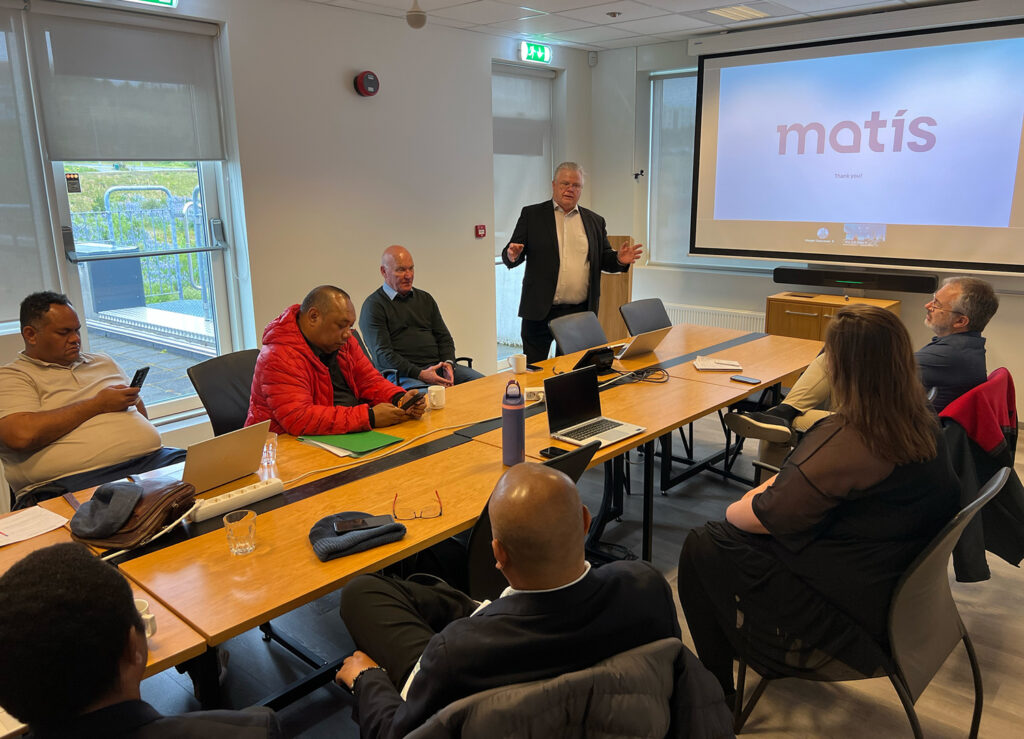
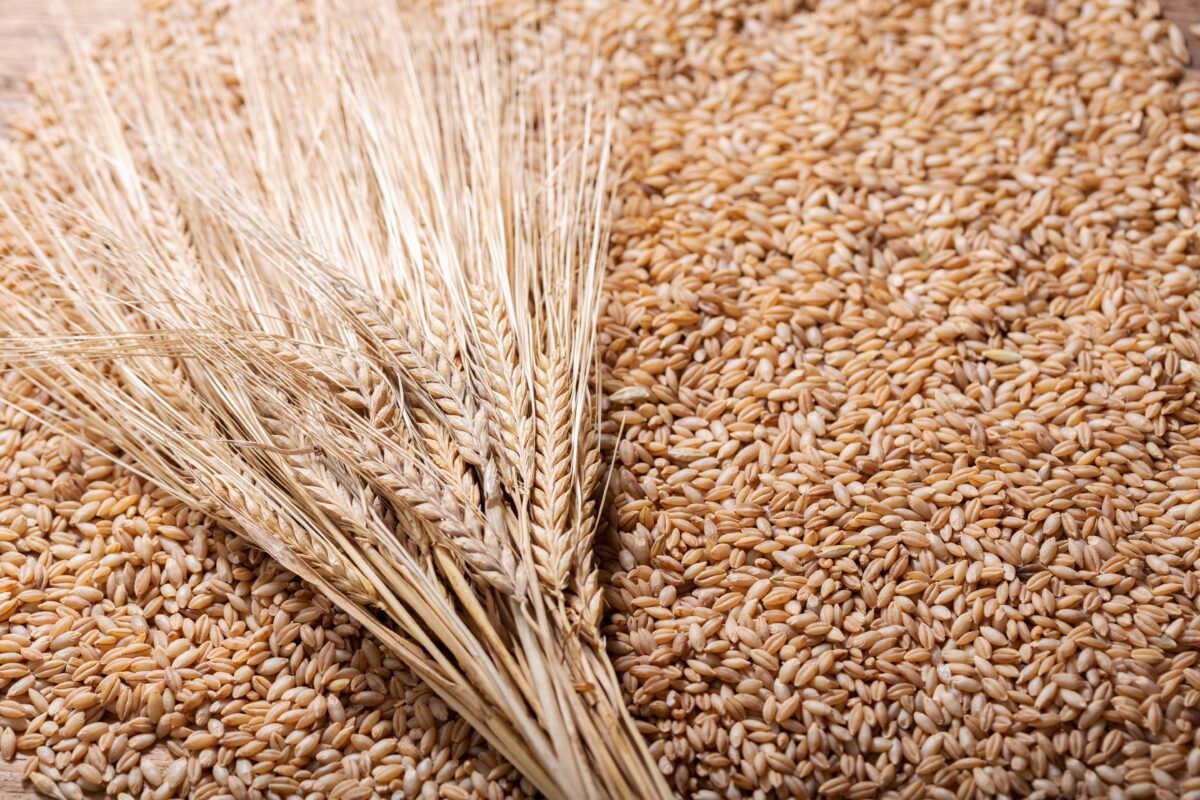
Á vegum atvinnuvegaráðuneytisins er nú unnið að tillögum um neyðarbirgðir fæðu fyrir Ísland. Tillögurnar eru unnar hjá Háskóla Íslands og verður þeim skilað á árinu 2025. Þegar tillögurnar verða tilbúnar, mun ráðuneytið nýta þær sem hluta af alhliða fæðuöryggisstefnu og innleiða sem hluta af almannavörnum. Með fæðuöryggi er átt við það að allir einstaklingar hafi alltaf aðgang að nægum og öruggum matvælum til að uppfylla næringarþarfir.
Kornbirgðir í landinu eru litlar en það skapar áhættu vegna loftslagsbreytinga og mögulegra truflana á innflutningi. Kornframleiðslan (bygg og hafrar) á Íslandi er talin í þúsundum tonna á hverju ári og er fyrst og fremst nýtt sem fóður fyrir búfé en lítill hluti fer til manneldis.
Það er því tilefni til að vekja athygli á upplýsingum sem liggja fyrir hjá Matís um innlent korn. Eðlilegt er að spurt sé hvort hægt sé að nota innlent korn í matvælaiðnaði og þá einkum í bökunariðnaði. Líta má á innlenda kornið sem leið til að drýgja takmarkaðar birgðir af hveiti eða til notkunar sem eina kornið í bökunariðnaði. Sýnt hefur verið fram á að hægt er að baka ágæt brauð úr 30% íslensku byggi á móti 70% hveiti og ná ágætri lyftingu. Byggmjöl er ágætt til kexframleiðslu og í fleiri bökunarvörur sem þurfa ekki lyftingu. Íslenskir hafrar hafa reynst ágætlega í hafragraut, múslí og kex. Sýnt hefur verið fram á að íslenskir hafrar henta ágætlega til framleiðslu á hafradrykkjum.
Hér má finna skýrslu- Íslenskt matkorn – Gæði, innihald og viðhorf
Frétt – Innlent korn til matframleiðslu
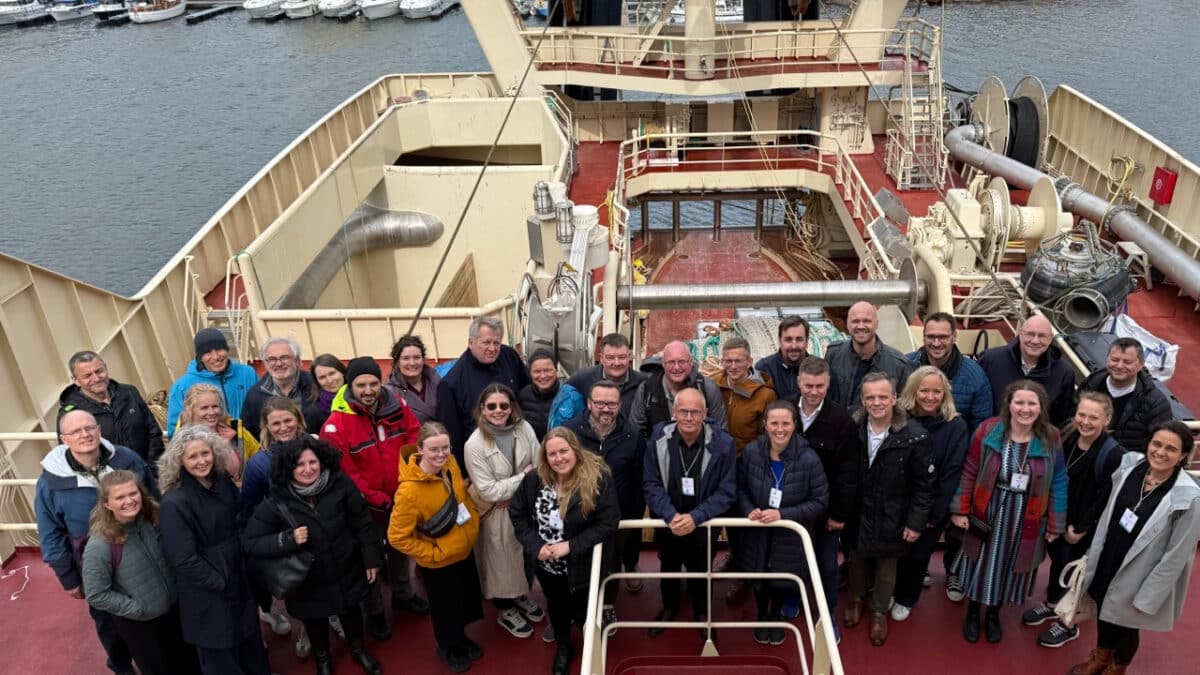
Þann fyrsta maí síðastliðinn hófst Evrópuverkefnið MeCCAM formlega (Measures for Climate Change Adaptation and Mitigation in European Fisheries).
MeCCAM er brautryðjandi Evrópuverkefni sem hefur það að markmiði að þróa mótvægis og aðlögunaraðgerðir gagnvart áhrifum loftslagsbreytinga á sjávarútveg Evrópu. Verkefnið er til fjögurra ára og er stýrt af færeyska fyrirtækinu Sjókovin. Verkefnið samanstendur af 16 þátttakendum frá 9 löndum og er fjármagnað af Horizonáætlun Evrópusambandsins fyrir samtals 4,5 milljónir Evra.
Upphafsfundur MeCCAM fór fram í Þórshöfn í Færeyjum þar sem þátttakendur eyddu saman þremur dögum. Á fundinum voru næstu skref skipulögð og innleiðing MeCCAM rædd. Augljóst var á þessum upphafsfundi að MeCCAM byggir á sterku samstarfi en það að leiða saman hagsmunaaðila úr iðnaði, vísindum og stefnumótun tryggir að niðurstöður verkefnisins séu bæði hagnýtar og áhrifamiklar.
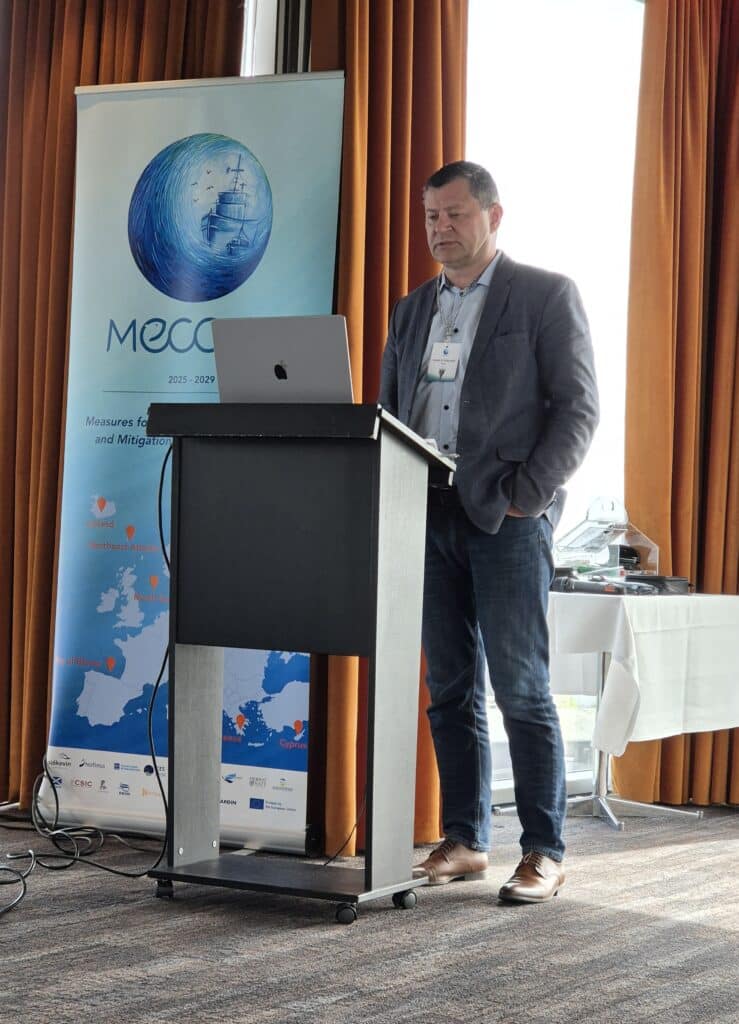
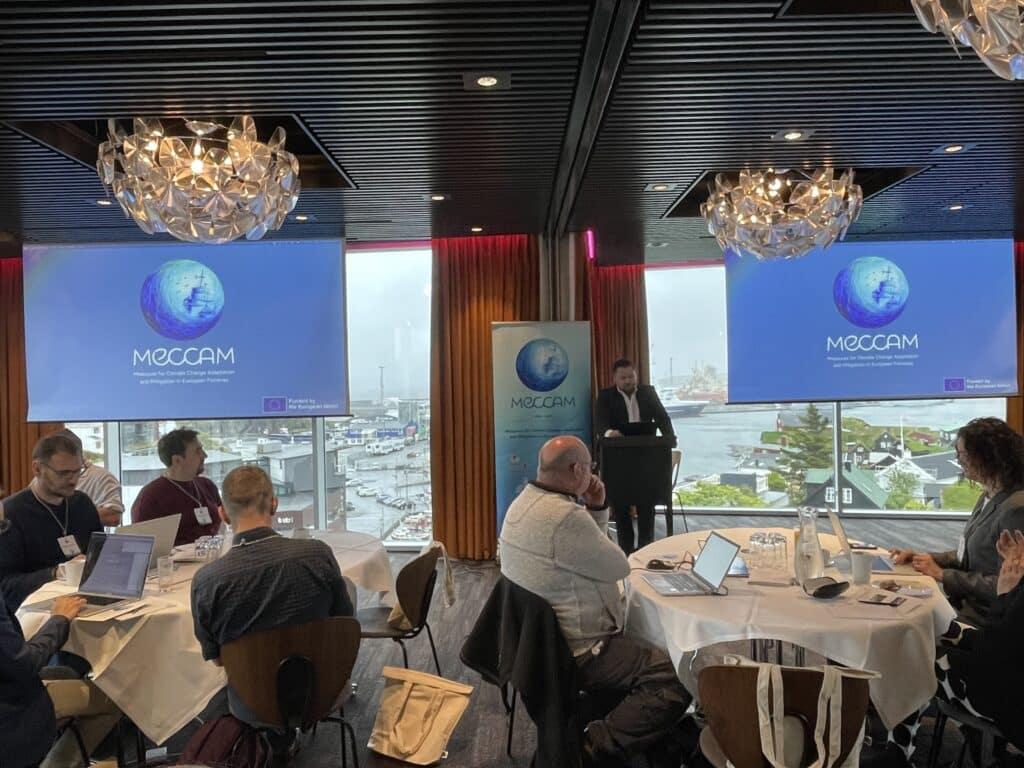
Niðurstöður verkefnisins verða m.a. á eftirfarandi sviðum:
Sjálfbær sjávarútvegur í breyttu loftslagi
Lausnir sem þróaðar verða í MeCCAM eru m.a. á sviði veiðarfæra og ákvarðanatöku (e. decision support tool), en þær geta dregið úr umhverfisáhrifum, eldsneytisnotkun og bætt veiðiáætlanir, samtímis því að tryggja hagkvæmni. Smáforrit sem skráir afla mun auðvelda veiðimönnum að bregðast við þeim rauntímabreytingum í útbreiðslu tegunda sem hlýnun sjávar getur valdið.
Betri ákvarðanartaka byggð á vísindum
Stafræn nýsköpun er lykilatriði í MeCCAM. Verkefnið mun kanna áhrif forrits sem ætlað er að meta umhverfisáhrif og skila nýjum verkfærum sem byggja á gögnum og venjum og styður við loftslagsþolna ákvarðanatöku í allri virðiskeðju sjávarútvegsins.
Sex hafsvæði rannsökuð víðsvegar í Evrópu
Lausnir MeCCAM verða innleiddar á sex rannsóknarsvæðum sem valdar voru til þess að enduspegla þær fjölbreyttu áskoranir sem sjávarútvegur í Evrópu stendur frammi fyrir – frá stórum uppsjávar og botnsjávar flotum, niður í smáútgerðir. Hvert rannsóknarsvæði mun prófa ákveðnar lausnir og verkfæri, sem á að tryggja að þær séu yfirfæranlegar á milli svæða.
Vegna vaxandi ógnar af völdum loftslagsbreytinga fyrir viskterfi sjávar og strandsamfélög, er MeCCAM tímabært og mikilvægt skref í átt að sjálfbærri framtíð evrópsks sjávarútvegs.

Further information about the project can be found here.
Forsíðumynd: Sjókovin

MeCCAM is funded by the European Union under Grant Agreement N° 101181571. Views and opinions expressed are however those of the author(s) only and do not necessarily reflect those of the European Union or REA. Neither the European Union nor REA can be held responsible for them.

Í vikunni fór fram umræða um nýtingu hliðarstrauma frá uppsjávarfiski til manneldis á Alþingi.
Eydís Ásbjörnsdóttir, þingmaður Samfylkingar í Norðausturkjördæmi, beindi þar athygli að því að mikið magn hliðarstrauma fellur til við vinnslu á uppsjávarfiski svo sem hausar, hryggir og innyfli sem að mestu leiti er nýtt til fóðurframleiðslu, einkum í mjöl og lýsi. Eydís nefndi að rannsóknir og þróunarverkefni á vegum Matís, háskóla og fyrirtækja sýna að tæknin er til staðar og gæti uppfyllt skilyrði til að nýta slíka hliðarstrauma til manneldis, en að innlend túlkun á regluverki Evrópusambandsins torveldi nýtingu þessara hráefna til manneldis.
Atvinnuvegaráðherra, Hanna Katrín Friðriksson, fagnaði þessari fyrirspurn og umræðu og ítrekaði þau miklu tækifæri sem felast í aukinni nýtingu hliðarstrauma til manneldis. Hún benti á að þessar reglugerðir hafa verið til sérstakrar skoðunar hjá Matvælastofnun og ráðuneytinu. Hún nefndi jafnframt að heimilt verði að nýta hliðarstrauma til manneldis að uppfylltum öllum þeim skilyrðum sem kveðið er á um varðandi framleiðslu matvæla, til dæmis að til staðar sé starfsleyfi, að hráefnið uppfylli kröfur um skynmat og aðrar gæðamælingar og að hráefnið sé meðhöndlað í samræmi við reglugerð um hollustuhætti.
Þá steig Jens Garðar Helgason, þingmaður Sjálfstæðisflokks, í púltið og sagði að „af öllum öðrum ólöstuðum er það prófessor Sigurjón Arason yfirverkfræðingur hjá Matís sem hefur leitt þessa vinnu og gert ótrúlega hluti í að auka verðmæti sjávarafurða.“
Við fögnum þessari umræðu á Alþingi og beinum athygli að þeim fjölmörgu rannsóknaverkefnum um nýtingu hliðarstrauma sem Matís hefur unnið að:
- EuFish_SustainableGrowth
- Verðmætasköpun úr laxablóði
- Fullnýting meltu
- Gullhausinn
- Verðmæti úr vinnsluvatni frá bolfiskvinnslu
- Product development from flex processing pelagic fish
- Detection of roundworms in fillets
- Verðmæt efni úr hliðarstraumum þörungavinnslu
- Protein from mackerel side streams
- Hrognkelsakollagen – umhverfisvæn afurð
- Bættir vinnsluferlar við sjófrystingu karfa

Í lok síðasta árs kom út vísindagrein í hinu virta tímariti Journal of Cleaner Production þar sem greint var frá niðurstöðum rannsóknar sem kannaði hvort endurnýjun íslenska togaraflotans hafi haft áhrif á útblástur gróðurhúsalofttegunda útgerðaflokksins. Nú er komin út report um verkefnið þar sem kafað er dýpra í aðferðafræði, framkvæmd og niðurstöður verkefnisins. Einnig hefur verið gefin út brochure sem dregur fram ýmsar upplýsingar um hreinleika, sjálfbærni og hollustu íslenska þorsksins. Verkefnið var styrkt af Matvælasjóð, en að því komu fjöldi sjávarútvegsfyrirtækja allt í kringum landið, ásamt Háskóla Íslands, Háskólans á Akureyri, RISE í Svíþjóð og Matís.
Frá aldamótum hefur átt sér stað mikil endurnýjun í íslenska togskipaflotanum, samhliða því sem fjöldi skipa í útgerðarflokknum hefur fækkað um nánast helming. Hefur verið látið að því vaka að nýju skipin séu mun sparneytnari og því hljóti kolefnisspor afurðanna að hafa dregist saman af þeim völdum. Gögn um olíuinnflutning til fiskiskipa virðast styðja þessa ályktun.
Til að greina betur áhrif endurnýjunar flotans á kolefnisspor fiskafla tóku því saman höndum nokkrir fulltrúar togaraútgerða, ásamt sérfræðingum Matís, Háskóla Íslands, Háskólans á Akureyri og RISE (Research Institutes of Sweden) í mati á umhverfisáhrifum framleiðslukerfa. Safnað var gögnum frá 11 togskipum yfir 10 ára tímabil og aðferðafræði vistferilsgreininga (Life Cycle Assessment) beitt til að greina kolefnisspor á aflaeiningu, og þá hvort samanburður á milli eldri og nýrri skipa sýndi tölfræðilega marktækan mun. Skipin í úrtakinu voru valin til að gefa gott þversnið að íslenska togskipaflotanum hvað varðar stærð, aldur, aflasamsetningu og staðsetningu umhverfis landið. Voru í úrtakinu fjögur ný skip sem keypt voru til að koma í stað eldri skipa þ.a. samanburður fékkst milli eldri og nýrri skipa hjá sömu útgerð, með sömu aflaheimildir og jafnvel sömu áhöfn.
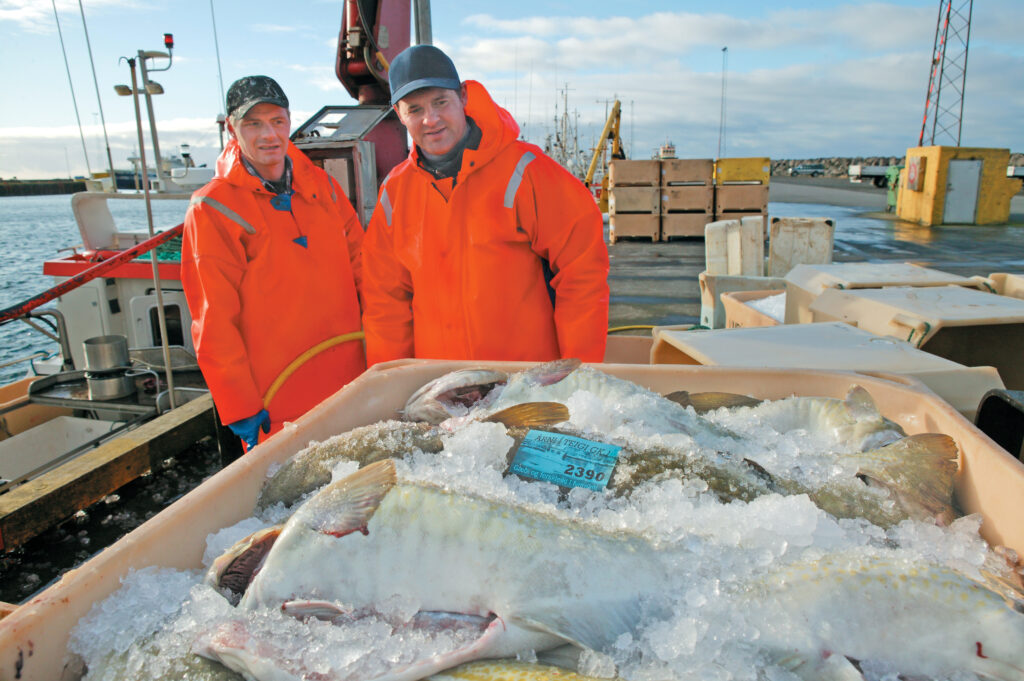
Hagræðing í fiskiskipastólnum skiptir úrslitum þegar kemur að lækkun kolefnisspors
Niðurstöður greiningarinnar leiddu í ljós að erfitt sé að fullyrða að endurnýjun togaraflotans ein og sér hafi haft áhrif á kolefnisspor á aflaeiningu. Þrjú af þeim fjórum nýju skipum sem til skoðunar voru sýndu ekki marktækt lægri kolefnisspor en eldri skip sem þau komu í staðinn fyrir. Fjórða skipið kom hins vegar í staðinn fyrir tvö eldri skip, og þar var um marktæka lækkun að ræða. Líklegasta skýringin þar er hins vegar sú að þar sem aflaheimildum tveggja skipa var safnað saman á eitt nýtt skip sé það kvótastaða og útgerðarmynstur sem hafi ráðandi áhrif, frekar en aldur skipanna. Þessar niðurstöður eru í nokkuð góðu samræmi við fyrri rannsóknir hér á landi, sem sýnt hafa fram á að ástand nytjastofna, aflaheimildir og útgerðarmynstur skipta langsamlega mestu máli þegar kemur að útblæstri gróðurhúsalofttegunda á aflaeiningu. Þannig hafi samþjöppun aflaheimilda og fækkun skipa haft úrslitaáhrif varðandi lækkun kolefnisspors, frekar en endurnýjun flotans. Rétt er hins vegar að hafa í huga að samanburður á milli ára getur verið erfiður þar sem fiskigengd og aflabrögð geta verið mjög mismunandi á milli ára.
Yfirgripsmeiri greining á kolefnisspori togaraafla heldur en áður hefur þekkst á Íslandi
Niðurstöður vistferilsgreiningarinnar gáfu einnig upplýsingar um meðaltals kolefnisspor á aflaeiningu fyrir skipin í úrtakinu. Eru það mjög mikilvægrar upplýsingar þar sem svo yfirgripsmikil greining á kolefnisspori togaraafla hefur ekki farið fram hér á landi áður. Fyrri gögn náðu einungis yfir einstök togskip yfir mun styttri tímabil. Niðurstöðurnar sýna að kolefnisspor landaðs þorskafla er 0.7 kg CO2 ígildi/kg afla, 0.8 kg þegar kolefnissporinu er úthlutað á þann hluta aflans sem verður að matvælum, og 4.5 kg þegar því er úthlutað á prótein einingar. Svipaðar niðurstöður fengust fyrir ýsu og ufsa, en kolefnisspor karfa er mun hærra þar sem veiðarnar sjálfar eru orkufrekari og nýting til manneldis mun lægri. Þessar niðurstöður eru í nokkuð góðu samræmi við sambærilegar rannsóknir sem gerðar hafa verið á undanförnum árum í þeim löndum sem við viljum helst bera okkur saman við. Nýlegar greiningar á kolefnisspori norsks togaraafla sýna til dæmis að hann sé nokkurn vegin á pari við þann íslenska þegar miðað er við kolefnisígildi á afla upp úr sjó. Fyrir hvert kíló landaðs afla norska togaraflotans er hins vegar brennt 0,35 lítrum af olíu í samanburði við 0,26 lítra hjá þeim íslenska, en munurinn þar á liggur líklegast í því hve hátt hlutfall norsks togaraafla er sjófyrstur.
Sé kolefnisspor togskipanna í úrtaki rannsóknarinnar borin saman við niðurstöður samskonar rannsóknar sem birt var árið 2014, sem innihélt þá jafnframt greiningu á kolefnisspori línuskipa, má sjá að spor línuskipanna er um helmingi minna en togskipanna. Í þeirri rannsókn voru hins vegar einungis tvö stærri línuskip og tveir smábátar í úrtakinu, jafnframt því sem gögnin náðu aðeins yfir eitt ár. Full ástæða væri því til að endurtaka þá greiningu með jafn yfirgripsmiklum gögnum og safnað var fyrir greininguna á togskipunum.
Íslenskur fiskur með hvað minnst kolefnisspor í samanburði við önnur matvæli
Þegar áðurnefnd kolefnisspor togaraafla eru borin saman við önnur matvæli er augljóst að íslenskur togarafiskur er meðal þeirra próteingjafa í heiminum sem bera hvað minnst umhverfisspor. Sé horft til kolefnissígilda á hvert kíló matarpróteina (kg CO2 eq/kg edible protein) er til dæmis kjúklingur með meira en 12 sinnum stærra kolefnisspor á prótein einingu en þorskur, svínakjöt með 17 sinnum stærra spor og nautakjöt 80 sinnum stærra spor. Rétt er þó að taka fram að þar er um alheims meðaltöl að ræða.

Hafa ber í huga að vistferilsgreiningin náði einungis til veiðihluta virðiskeðjunnar og að ekki var tekið með í reikninginn áhrif sem sýnt hefur verið fram í fyrri rannsóknum að hafa léttvæg áhrif á kolefnisspor togveiða. Ekki var heldur tekið með í reikninginn áhrif togveiða á sjávarbotninn, en á síðustu árum hafa verið leiddar líkur að því að togveiðar losi um mikið magn af CO2 sem bundið er í botnsetum. Vísindasamfélagið hefur hins vegar ekki komið sér saman um hver þau háhrif séu í raun og veru. Greiningin var gerð í samræmi við alþjóðlega staðla ISO 14044 og eru niðurstöðurnar því að fullu samanburðarhæfar við aðrar rannsóknir þar sem sömu stöðlum hefur verið fylgt.
Að lokum má halda því til haga að ræktun flestra matvæla krefst mikils magns landsvæðis og ferskvatns, sem er er þörf á þegar um villt sjávarfang er að ræða.

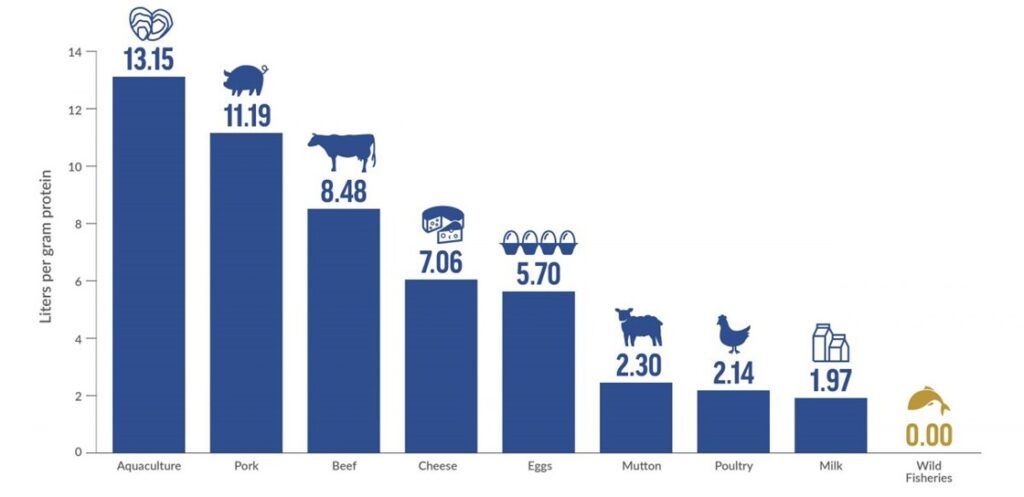
Frekari upplýsingar má nálgast á project website

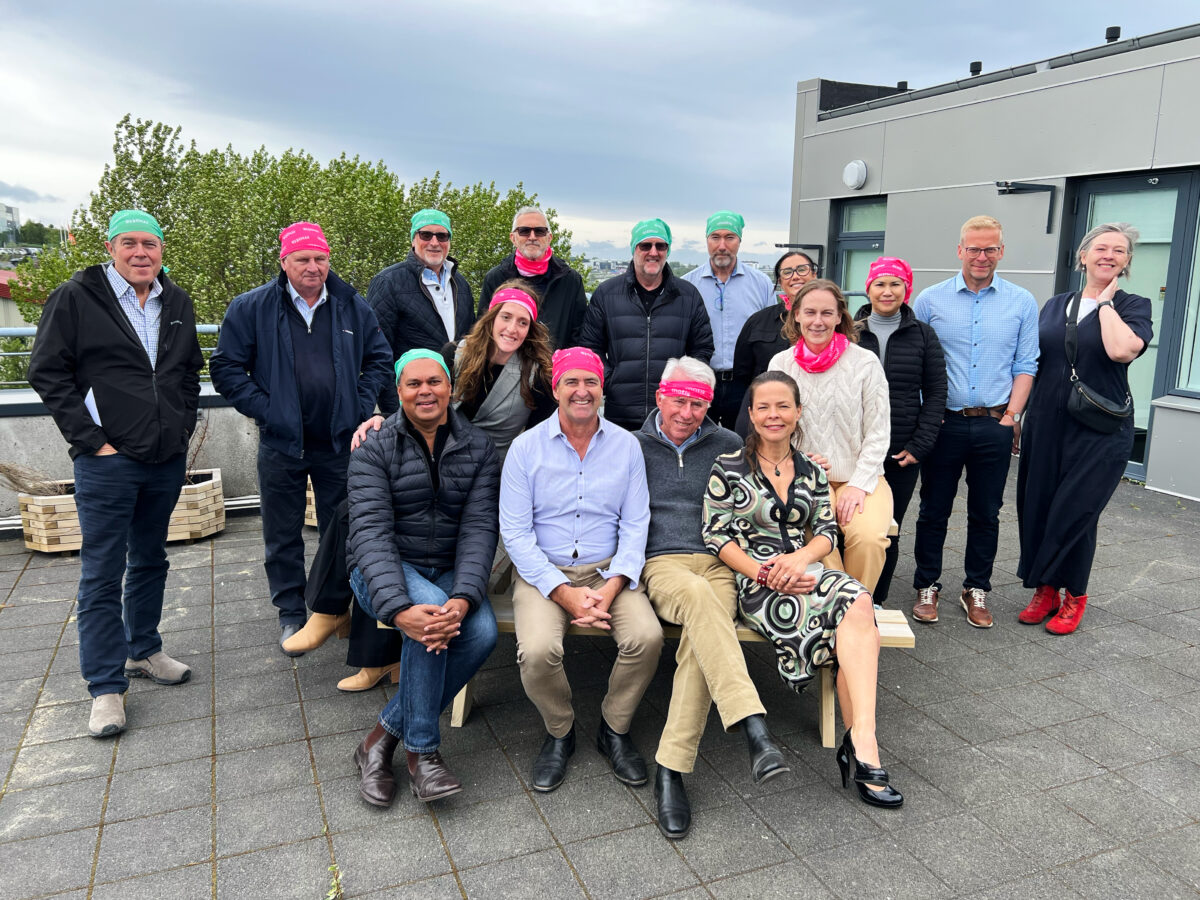
Í síðustu viku undirritaði Matís viljayfirlýsingu við Marine Bioproducts Cooperative Research Centre (MBCRC), sem markar upphaf að spennandi og mikilvægu samstarfi. MBCRC er áströlsk rannsóknar- og nýsköpunarmiðstöð sem leggur áherslu á verðmætasköpun í tengslum við sjávarlíftækni. MBCRC er sjálfseignarstofnun sem sameinar yfir 70 samstarfsaðila úr háskóla- og atvinnulífi og hefur aðsetur í Adelaide, Suður-Ástralíu.
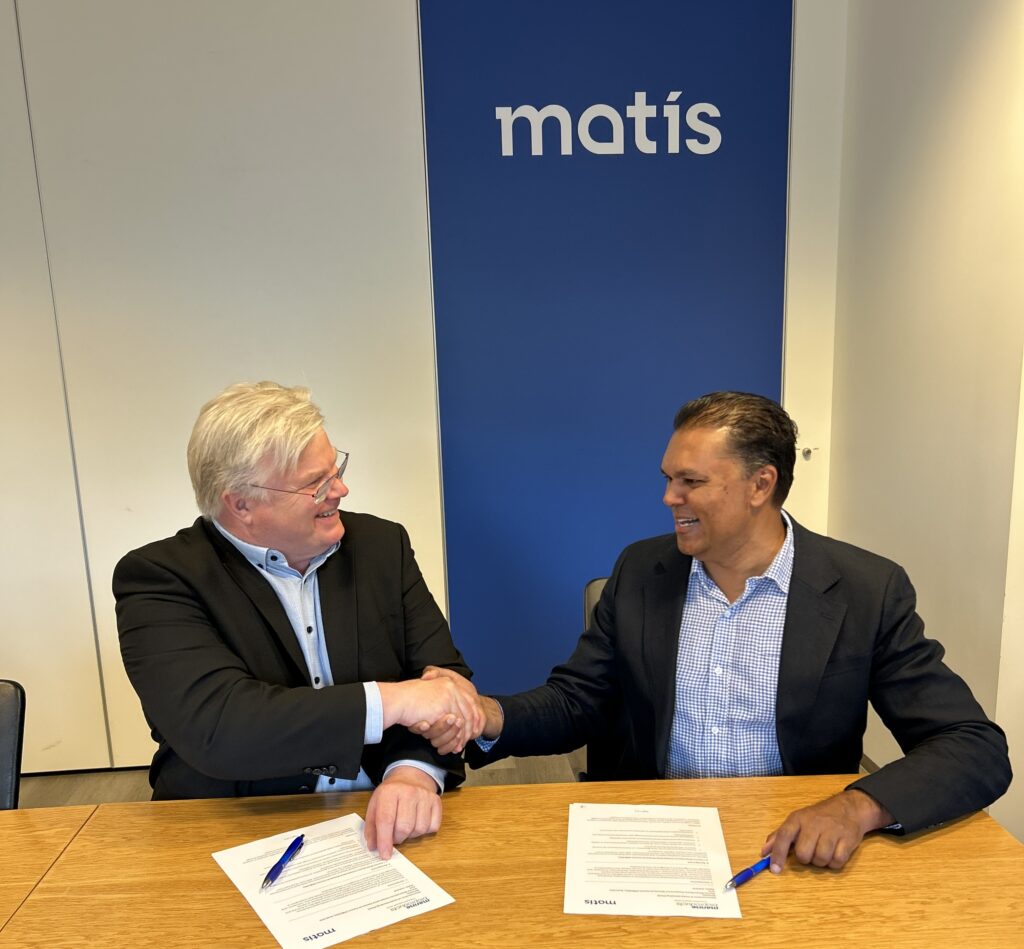
Þessi viljayfirlýsing felur í sér skýra framtíðarsýn um að nýta þau fjölbreyttu tækifæri sem felast í vinnslu lífefna úr hafinu, með það að markmiði að efla bláa hagkerfið, stuðla að sjálfbærri þróun og skapa verðmæti til framtíðar.
Samstarfið byggir á fimm meginmarkmiðum:
- að stuðla að miðlun þekkingar og vísindalegra nýjunga,
- að vinna að sameiginlegri rannsóknar- og þróunarstarfsemi á sviði sjávarlíftækni og verðmætra afurða úr hafinu,
- að hvetja til nýsköpunar og styðja við vöruþróun og markaðssetningu,
- og að innleiða sjálfbærar aðferðir sem tryggja ábyrga nýtingu sjávarauðlinda.
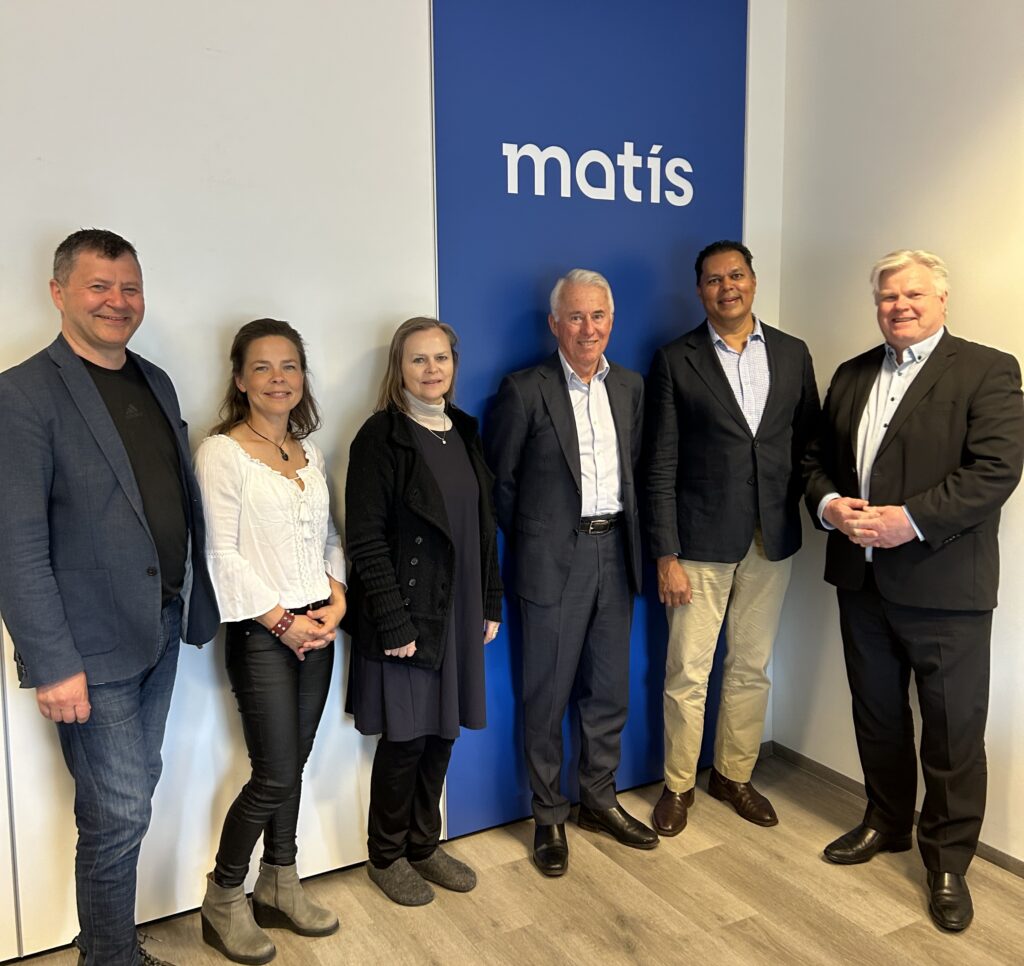
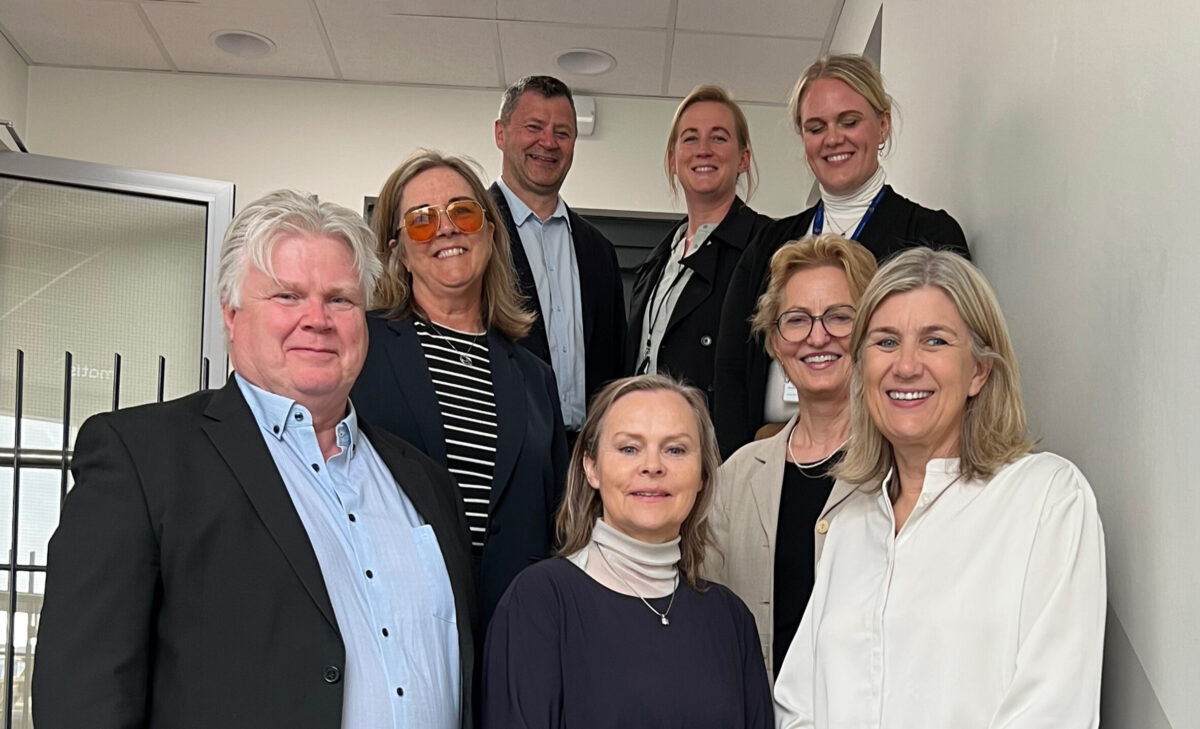
Við fengum þann heiður að taka á móti Hönnu Katrínu Friðriksson atvinnuvegaráðherra og föruneyti hennar í gær. Í heimsókninni kynntu þau sér starfsemi Matís og þau fjölbreyttu og spennandi tækifæri sem liggja í matvælarannsóknum og þróun á komandi árum.
Við þökkum kærlega fyrir komuna og ánægjulegt samtal.
Á myndinni eru Hanna Katrin Fridriksson atvinnuvegaráðherra, Oddur Már Gunnarsson forstjóri Matís, Anna Kristín Daníelsdóttir aðstoðarforstjóri Matís, Salvör Jónsdóttir stjórnarformaður Matís, Bryndís Hlöðversdóttir ráðuneytisstjóri, Ása Þórhildur Þórðardóttir skrifstofustjóri, Jónas Rúnar Viðarsson sviðsstjóri rannsókna hjá Matís og Marta Gall Jörgensen mannauðstjóri Matís.



